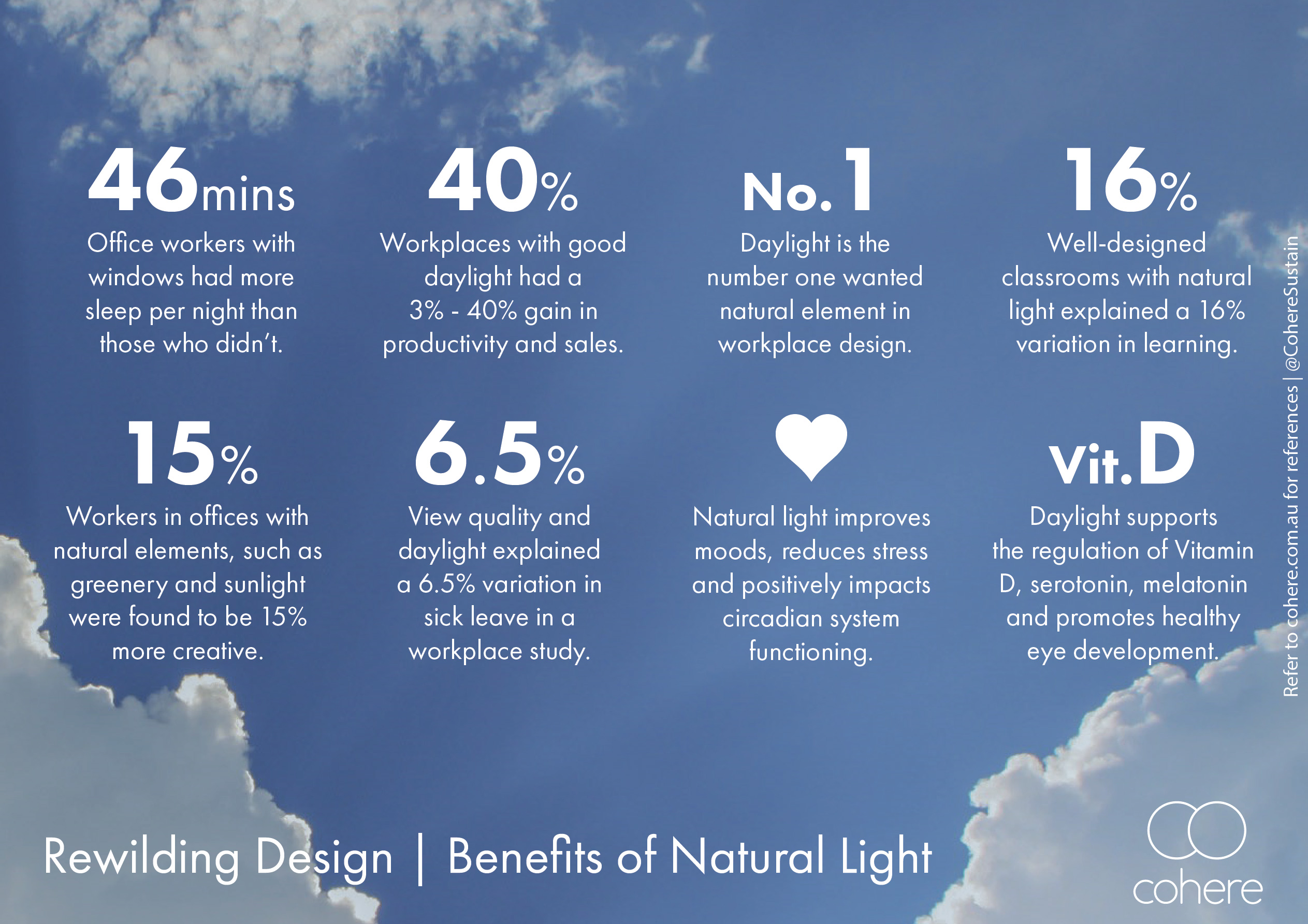
Over the past two years there has been a flurry of reports from the World Green Building Council, the International Well Building Institute and Human Spaces exploring the importance of our innate connection with natural elements. These reports bring together a wealth of academic research on how the presence of natural elements can promote health, wellbeing and productivity.
Out of these elements, daylight, has been found to be the number one wanted natural feature in the workplace. When you see the research findings, it’s easy to see why.
The benefits of natural light

A summary of the benefits of natural light. Image: Cohere
One neuroscience study found that people who sit by the window slept for 46 minutes longer a night on average compared with those who didn’t.
Other studies have found that well illuminated spaces with natural elements such as daylight and greenery can improve creativity and learning.
These findings put scientific rigour behind our intuitive desire for daylight. The business case is clear: daylight promotes human health and potential. Workers around the world are catching on, with many starting to question how this valuable natural element should be shared between staff.
“
The business case is clear: daylight promotes human health and potential.
Where do you sit at work?
How were the window seats in your workplace allocated? Was it done on a first come first served basis? Or have senior management taken the best seats in the house on privilege, leaving others to work in more artificial environments?
These research based findings suggest that there is value in being more strategic about sharing daylight amenity in the workplace. Not only for the performance benefits, but in consideration of the health and wellbeing of all staff.
As concepts of equity and justness become more prominent in business, will we start to see minimum standards for daylight exposure in the workplace? Especially for those that have no access to natural light during working hours.
Promoting daylight equity
Regardless of fitout design or building type, there are a number of practical things business can do to capitalise on the benefits of natural light.
From an operational perspective, strategies for rotating seating locations offers some value. Walking meetings are another great way for all staff to get a healthy dose of daylight, along with the numerous health and wellbeing benefits that come with a more active workforce.
Bringing an architectural lens increases scope for improving daylight distribution. From optimised furniture layouts, to external light shelves and the careful positioning of shared breakout spaces, there is a wide range of opportunities for increasing daylight amenity to the most frequently occupied work areas.
The case is clear: there is much more to a window seat than just the view. Given the demands of modern business, having environments that bring out our best is becoming increasingly important. Getting daylight distribution and justness right could be the key to creating workplaces brimming with creativity, productivity and wellbeing.
|
|
|
|
Copyright remains with the original authors |
